Submitted by Berrin Chatzi Chousein
’’The current culture in most schools of architecture is unsatisfactory’’ says Schumacher
United Kingdom Architecture News - Jan 25, 2017 - 11:27 25386 views
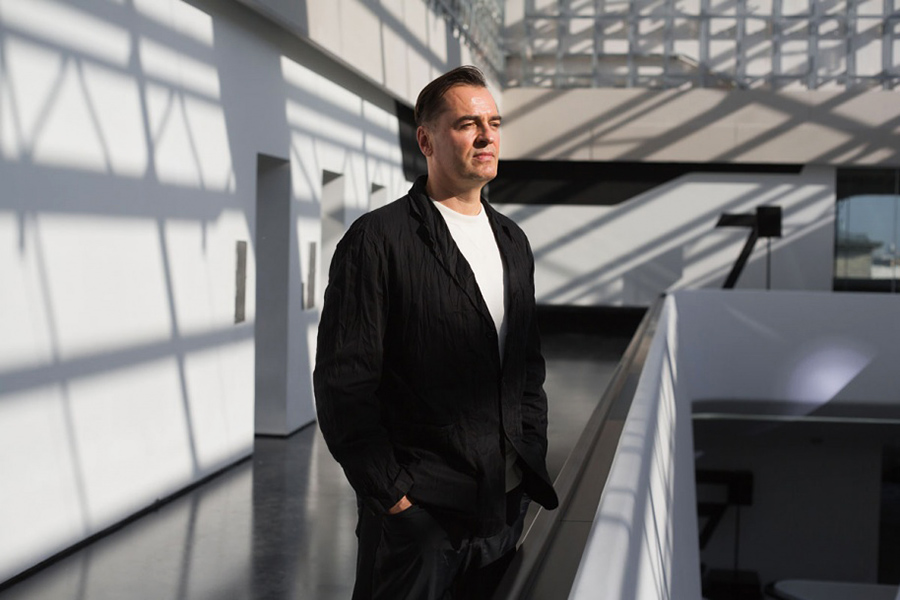
Parametricism reloaded! Parametricism is not only shaped for the design phenomenon itself or its sub-constituents we already are familiar with - Parametricism started to reshape itself in every segment of architecture, life, vague urbanism, behaviour modelling, fashion, act of participation, sensual experiences and even in new educational models.
The pioneer and defender of Parametricism Patrik Schumacher, Principal of Zaha Hadid Architects, gets to the root of the problem of Parametricism and explains why ''Parametricism is the only credible candidate to become the epochal style of the 21st century'' beyond being the most potent movement and avant-garde style, as always stated in his Academic Papers.
In this exclusive interview, Schumacher spoke to World Architecture Community and discussed the essence of Parametric Architecture considering its realistic paradigms as well as the undervalued potentials of Parametricism in today's education system.
Schumacher, 55, described the current culture as ''anachronistic'' and said ''the current culture is not well aligned with the historical task of architecture and our historical position within the current cycle of innovation in architecture''.
''The current culture in most schools of architecture is unsatisfactory in my view'' he said. ''The schools are mired in confusion about society and architecture’s role within it. They are over—politicised, naturally without the capacity to grasp, let alone to resolve, the political issues that dominate its design and debate agendas'' he added.
Needless to say Schumacher is very good at public speaking as we experienced at the World Architecture Festival 2016 and his words immediately catch the attention of audiences, since he is now the sole icon of Zaha Hadid Architects, following Zaha Hadid's passing away back in March last year.
After a long debate and discussion on Schumacher's speculative words, in that interview, the architect explained what he calls the DNA of ZHA; how it works and shapes the values, principles and methodologies of Parametricism. Besides that, Schumacher also discussed the social and political aspects of Parametric Urbanism to a certain extent, as his new research investigates ''some grasped advantages of complex arrangements for a complex life process in parametric urbanism''.
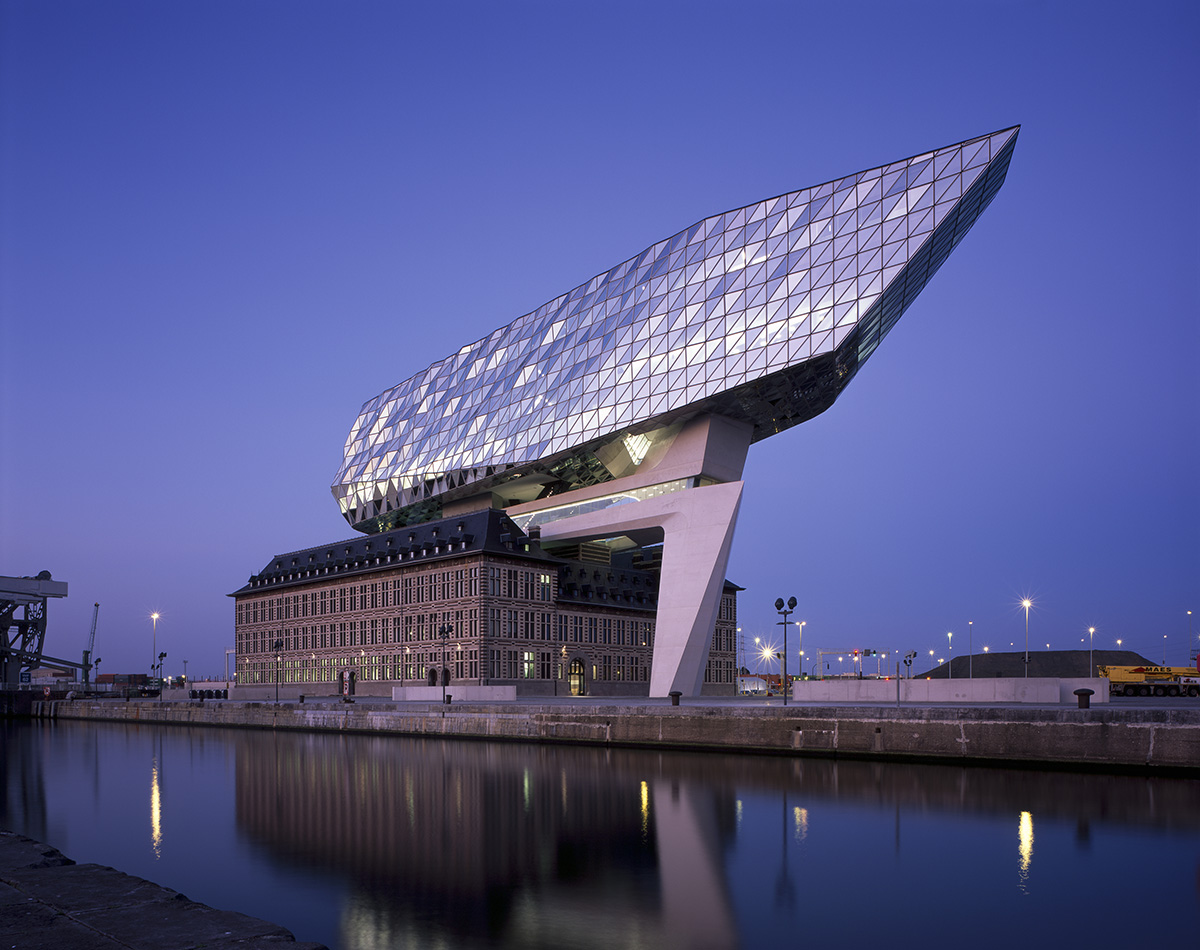
Antwerp Port House in Belgium designed by Zaha Hadid Architects. Image © Helene Binet
Schumacher believes that Parametricism will shape our future. Read the full transcript of our interview with Patrik Schumacher below:
Berrin Chatzi Chousein: Tell us about the DNA of ZHA, how does it shape or change (if at all) after Zaha Hadid?
Patrik Schumacher: I would say the DNA in terms of design values, principles and methodologies of ZHA – at a certain level of abstraction - coincides with the values, principles and methodologies of Parametricism. These I have made explicit in my writings. Of course there are further more implicit, unique aspects of ZHA, which would require a lot of further 'close reading' of our projects. However, I cannot start such work in the context of this interview. I suspect that such analysis might bring out many features I would call limitations due to our particular history, tool sets, ways of working etc. rather than positive features that deserve to be generalized. Are there some hidden undervalued gems that would deserve attention and generalisation? Perhaps.
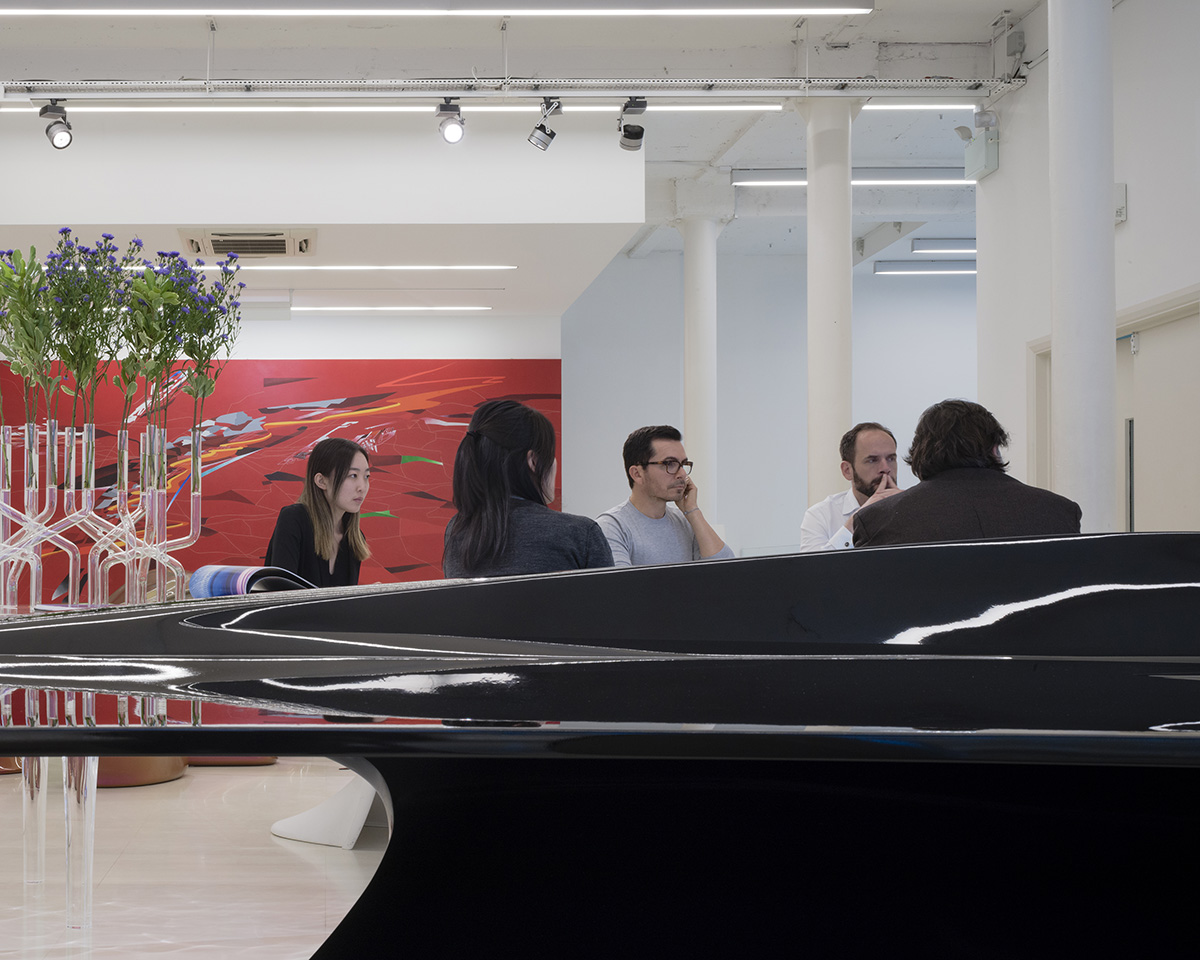
Zaha Hadid Design Gallery-meeting in 2016. Image © Archmospheres, courtesy of ZHA
Berrin Chatzi Chousein: ZHA is a growing multi-disciplinary studio and working on different ranges of products other than buildings, like shoes, furnitures, housewares, etc. How do you organize your team or departments inside? I’m asking this because these are small-scale productions and require working on some sort of ‘prototype’ and this means that you need to get a lot of physical-production to test it. Do you have a specialized teams/departments on these cross-disciplines?
Patrik Schumacher: Yes, we have a product design department for furniture, products, fashion and jewellery. Recently we have also established an interior design department. Both departments use architects from the ZHA on many occasions and are thus not exclusive groups.
Berrin Chatzi Chousein: How about the materiality? You’re mostly using glass and aluminium in your products - wood is rarely seen although it is very much used in general. What are the challenges of using these materials, especially in manufacturing process beside its visual satisfaction?
Patrik Schumacher: We have started to design with timber, not only timber surfaces but also timber structures.
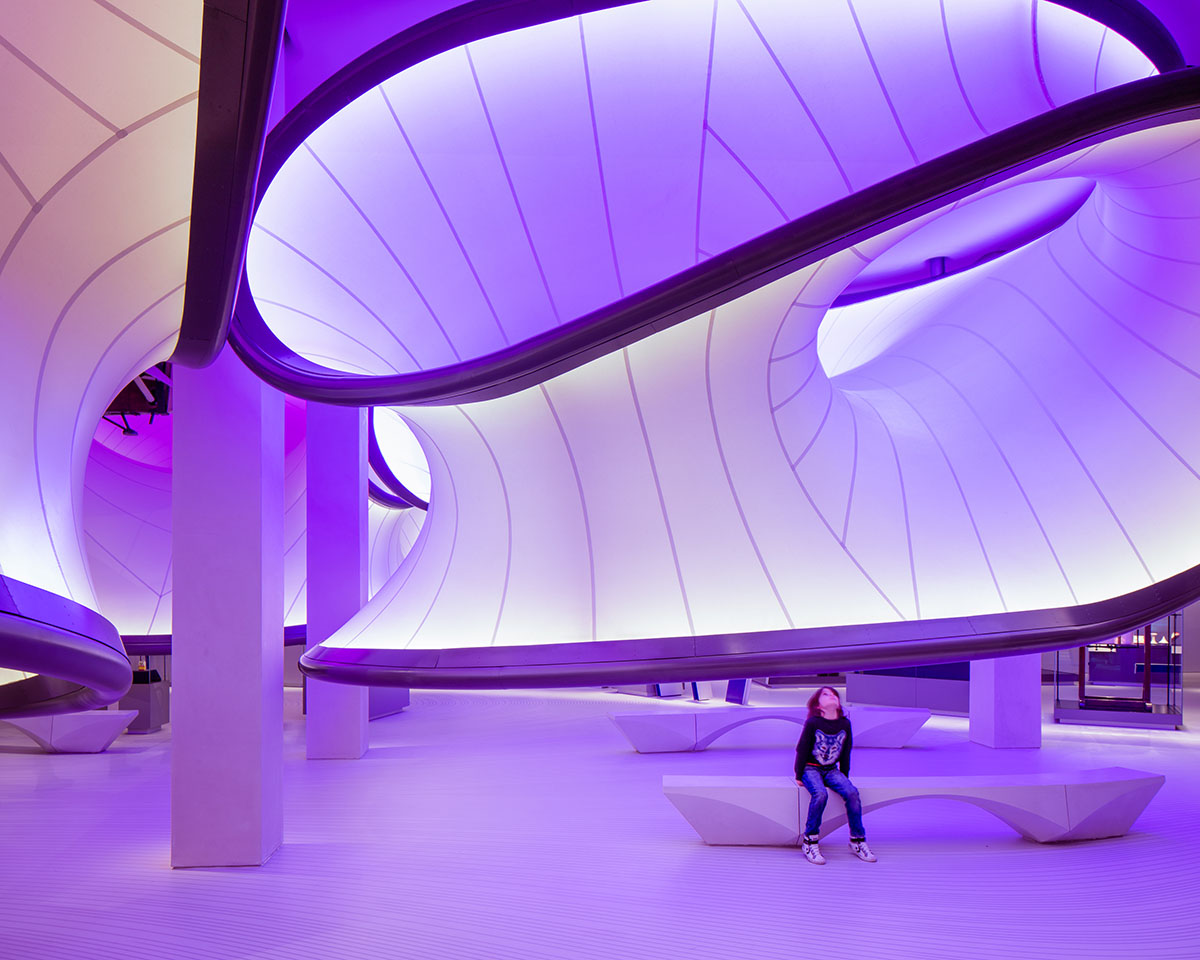
Mathematics: The Winton Gallery in London designed by Zaha Hadid Architects. Image © Luke Hayes
Berrin Chatzi Chousein: You are a great pioneer and defender of Parametricism. Can you tell us how will parametricism influence/shape new styles or the future of architecture?
Patrik Schumacher: Parametricism is architecture’s answer to contemporary, computationally empowered civilization. Parametricism is the only style that can take full advantage of the computational revolution that drives contemporary civilization. As conceptual definition of Parametricism one might offer the following formula: Parametricism implies that all architectural elements and compositions are parametrically malleable.
This implies a fundamental ontological shift within the basic, constituent elements of architecture. Instead of the classical and modern reliance on ideal (hermetic, rigid) geometrical figures - straight lines, rectangles, as well as cubes, cylinders, pyramids, and (semi-) spheres - the new primitives of parametricism are animate (dynamic, adaptive, interactive) geometrical entities - splines, nurbs, subdivs, particle-spring systems, agent based systems ect. - as fundamental ‘geometrical’ building blocks that can be made to resonate with each other and with the wider context via scripts.
Parametricism is the most potent movement and avant-garde style in architecture today. It has been maturing and accumulating contributors globally for over 20 years. Parametricism is the only credible candidate to become the epochal style of the 21st century, the first global style for architecture, urbanism and the design disciplines since the crisis and demise of Modernism 45 years ago. Postmodernism and Deconstructivism were transitional styles, each leading the discipline for about a decade. The future belongs to Parametricism.
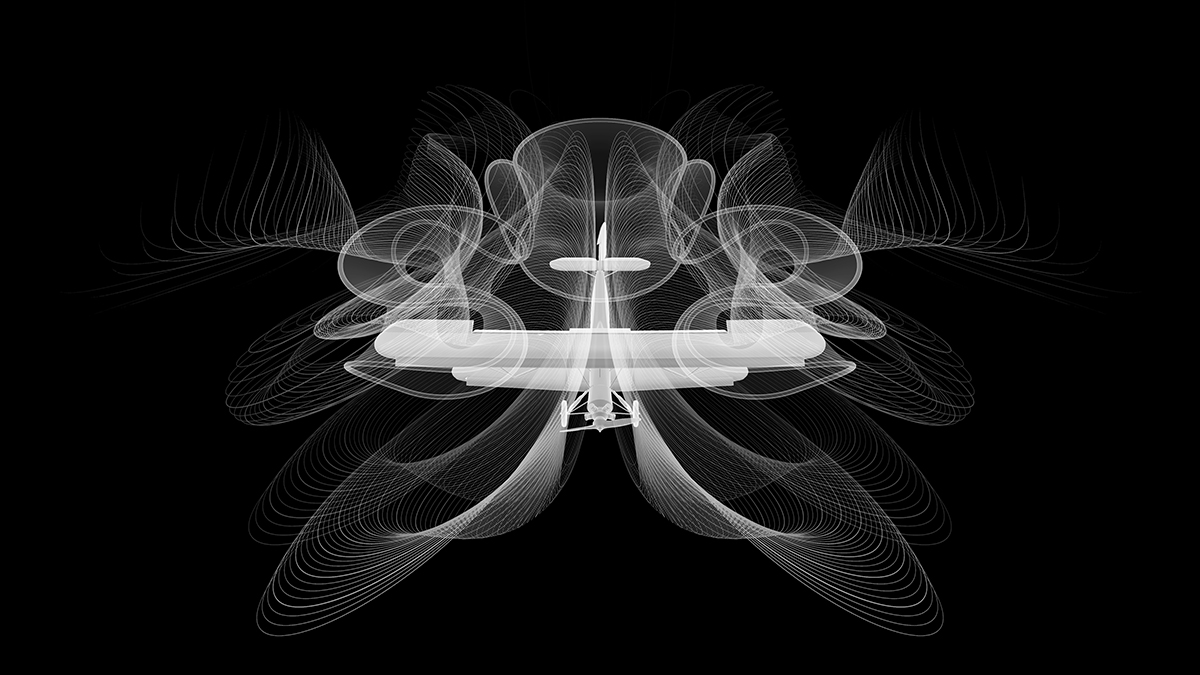
Concept diagram of Mathematics Gallery. Image © Zaha Hadid Architects
Berrin Chatzi Chousein: We see that all these approaches become much more common and acceptable in architecture and for the new urban design models; robotic architecture, generative architecture etc. that are all technology-driven approaches forcing our aesthetic boundaries as well. Do you think all these data-driven tools influence our sensual experiences?
Patrik Schumacher: Yes. These new tools allow us to build up much higher levels of complexity and intricacy that will transform the physiognomy of our designed and built environment and thus deliver a new aesthetic experience and sensuality. The style of parametricism with its use of adaptive and integrative curvelinearity and its ability to establish resonances across divers parts, zones and subsystems allows us to maintain legibility in the face of complexity.
This is empowering and will acquire the more aesthetic appeal the more we experience its life enhancing superiority. This requires an aesthetic revolution in the discipline as well as an attendant aesthetic evolution in our audiences and users.
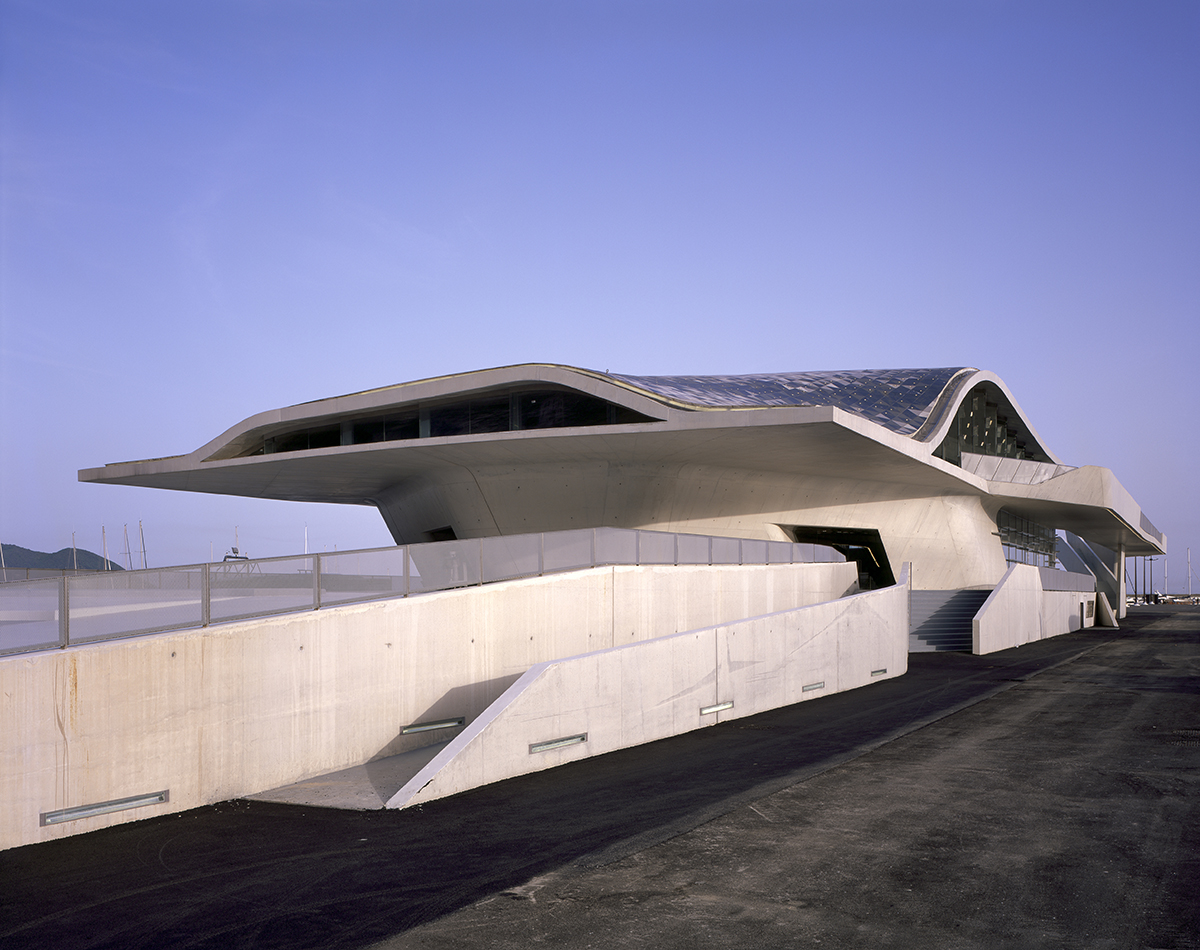
Salerno Maritime Terminal in Salerno, Italy designed by Zaha Hadid Architects. Image © Helene Binet
Berrin Chatzi Chousein: How would you define ‘parametric urbanism’? Does it tolerate social and political aspects of fair urbanism for all? I mean, can you analyse and implement some ‘behavioural models’ on these complex forms of urbanization in parametric urbanism, if yes, can you name these tools?
Patrik Schumacher: Parametric Urbanism is the application of Parametricism to urban design. It delivers the conceptual, formal and computational resources for forging a complex, variegated urban order on the basis of parametric logics that allow it to adapt an urban texture to varied pre-existing contexts and to the changeful dynamics and contingencies of market forces without loosing its identity and collapsing into the visual chaos of the indiscriminate urban spill that has taken over our cities since the retreat of central urban planning. Parametricism thus makes urban order and identity compatible with the neo-liberal re-emergence of market processes after the demise of Modernism.
Parametricism is in principle neutral and thus compatible with respect to social policies aiming at redistributive social justice. I certainly see it as an important capacity of architecture to grasp and congenially translate political prerogatives into spatial arrangements and architectural expressions. However, these prerogatives do not originate within architecture and should not be challenged from within our discipline. We are neither competent, nor legitimated in this respect. With respect to the implementation of behavioural models that can verify the social agency of our urban compositions we are as yet at the beginning of a new paradigm and research programme that aims at precisely this.
So far I can only offer general, intuitively grasped advantages of complex arrangements for a complex life process. However, my research project tries to underpin these intuitions with a new form of simulation that I call ‘life process modelling’. Agent-based interaction modelling promises to lift architectural design to a whole new, compelling level of service, providing precise performance criteria backed up by measures generated in simulations that in turn are backed up by evidence-based model calibration. This is what I am working on.
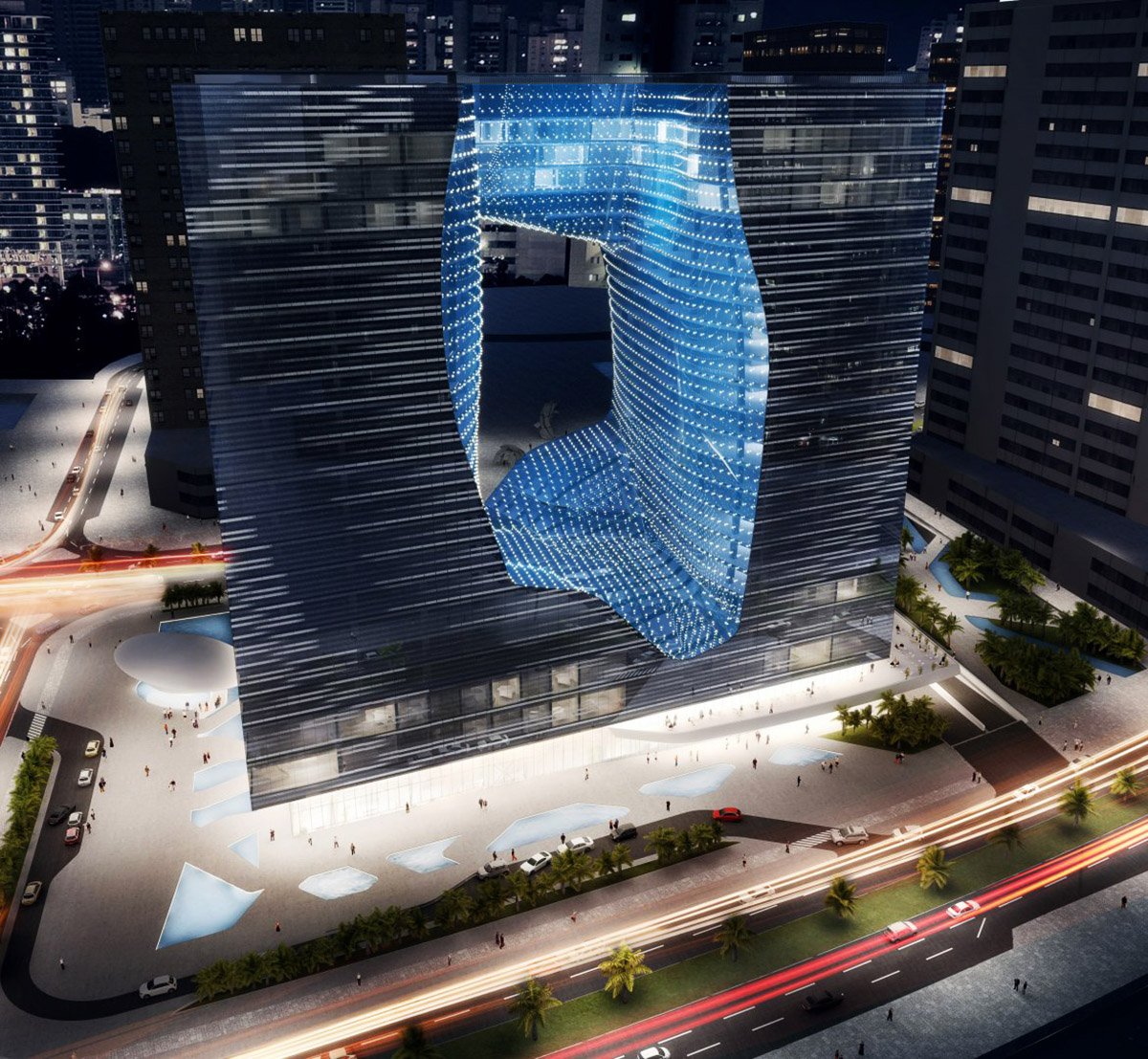
Opus Hotel & Service Apartments, Dubai, UAE. Image © Zaha Hadid Architects
Berrin Chatzi Chousein: You said in your latest Facebook post ''I am in general rather sceptical about political action in our society and trust more in the rationality of voluntary initiatives and market processes''. What do you mean by ‘rationality of voluntary initiatives and market processes’? How should they be rationalized and by whom, or what are these mechanisms that need to control these radical stances in order to be more realistic or fluid?
Patrik Schumacher: The market process itself is an inherently rational process that builds on the productive power of expansive social cooperation on the basis of the division of labour and exchange. The freedom of exchange ensures that only locally and individually available knowledge about local conditions and preferences feed into the economic process. The capitalist market using money, the price-system and profit/loss signals is a momentous evolutionary achievement and evolutionary accelerator.
A truly ingenious marvel – designed by nobody like most break through evolutionary achievements – the market using monetary prices allows for the an otherwise unimaginable expansion of social cooperation, encompassing millions of people, unknown to each other, without the presupposition of shared purposes and without the need for collective, binding decisions. The price system equilibrates the myriads of local, dispersed and often only tacit knowledge that feed into the myriad of choices and bidding processes affecting the ubiquitous interplay of supply and demand that shapes all prices within an interconnected network of prices.
This price system is a powerful and parsimonious tele-communication and information processing system that gives (and takes from) all participants just the amount of relevant information that allows each to fit their divergent plans into an overall, coherent pattern of resource allocation. The many dispersed knowledges integrated by the market process can never be centralized, not only because there is far too much information but because much of the underlying knowledge is not explicit and can therefore not be conveyed at all. This is why liberalism had to re-emerge as neo-liberalism when the new complexities and dynamics of globalisation and the post-fordist, computationally empowered production technologies made socialist and social-democratic planning less and less viable.
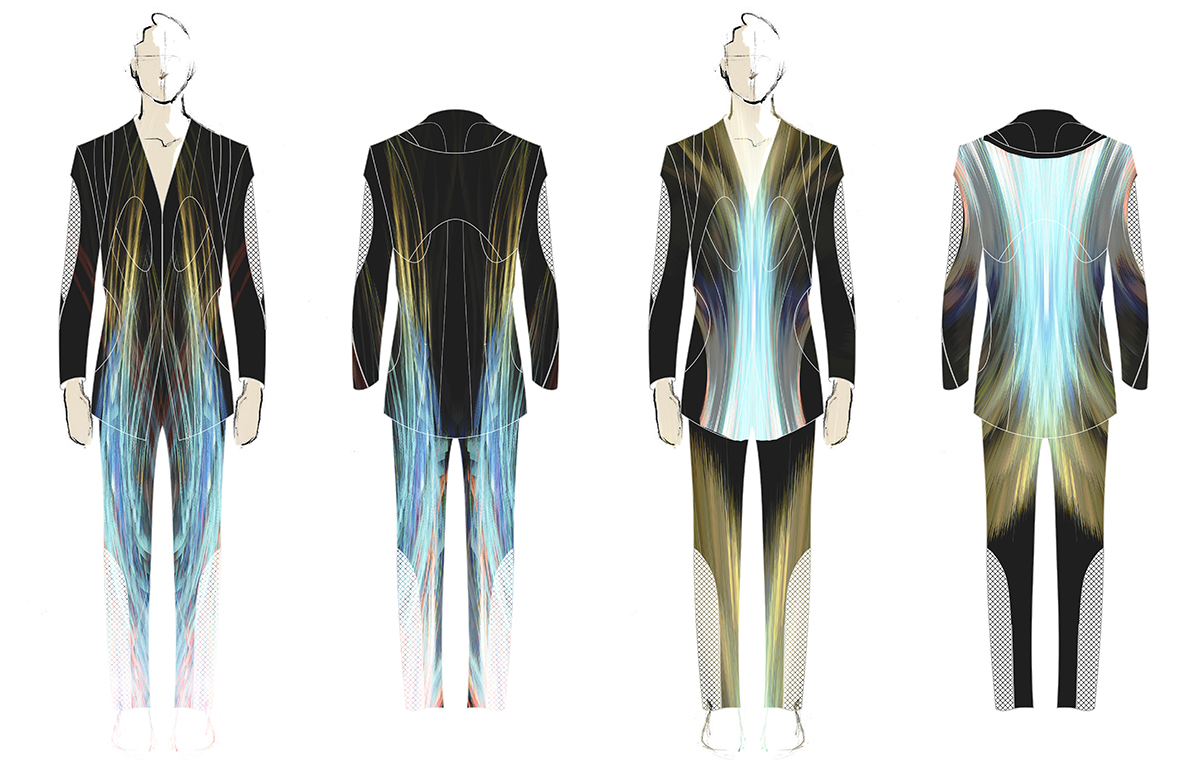
Suit by Patrik Schumacher 2016 (digital concept sketch). Image courtesy of Maison Maison Non
Berrin Chatzi Chousein: We realize that lately, architectural education becomes much more experimental and progressive. How do you evaluate the architectural education system nowadays? Do you think the architectural education needs to change?
Patrik Schumacher: The current culture in most schools of architecture is unsatisfactory in my view because this culture is anachronistic and thus not well aligned with the historical task of architecture and our historical position within the current cycle of innovation in architecture. The situation was much better 8 years ago, but degenerated since then. This has a lot to do with the external disturbance and distraction of the 2008 financial crisis and the economic stagnation and political upheavals that followed. In terms of historical significance - and in contrast to the deep technological and socio-economic transformations we witness - these events are not profound and deeply transformative events.
They should not have disrupted the progressive cumulative research and development of the discipline towards a new mainstream global best practice under the banner of parametricsim. The schools are mired in confusion about society and architecture’s role within it. They are over—politicised, naturally without the capacity to grasp, let alone to resolve, the political issues that dominate its design and debate agendas.
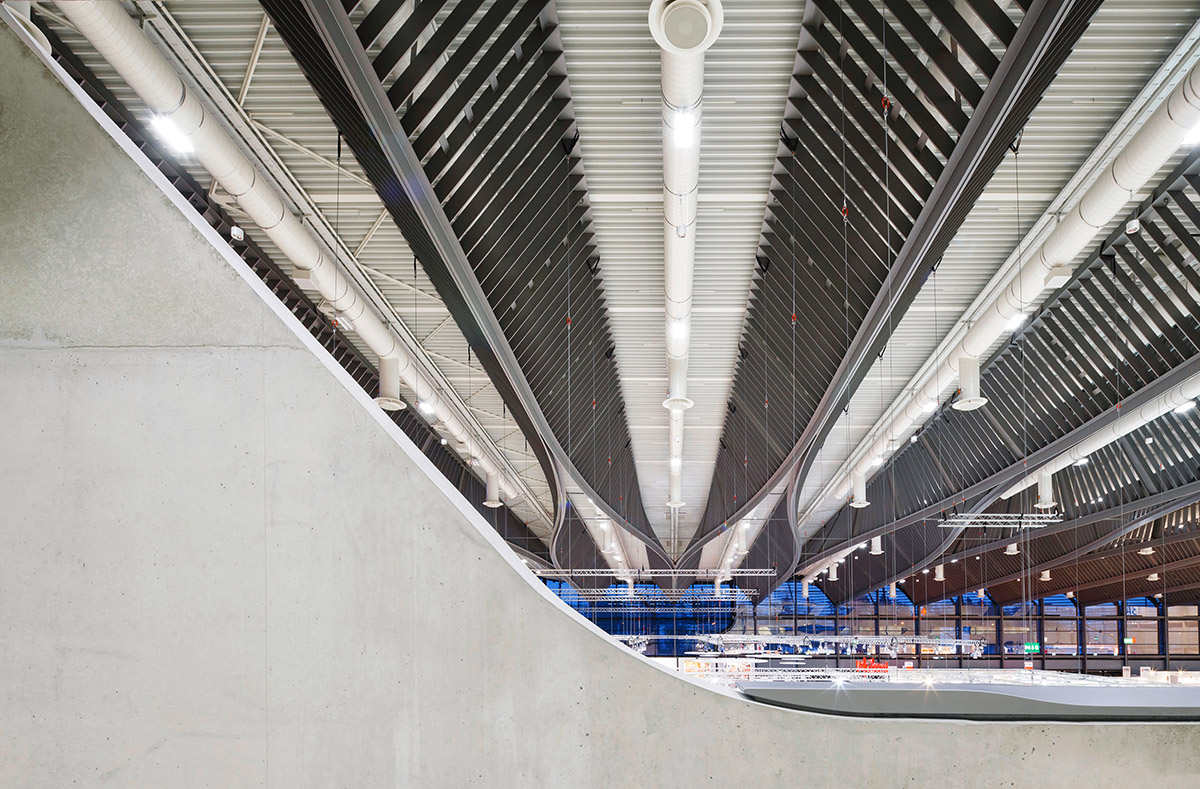
Zaha Hadid Architects' NürnbergMesse Hall 3A. Image © Heiko Stahl
Berrin Chatzi Chousein: While every designer or creative industry in UK is reacting against Brexit, but you love Brexit? Why?
Patrik Schumacher: I prefer Brexit as an opportunity - so far a mere potential without a lot of hope towards quick realisation - over the stifling lock-in within an expansive European bureaucratic state machine who’s regulatory and re-distributive appetites imply stagnation for years to come. I have no sympathy with the anti-immigration agenda that was connected with the Brexit campaign.
However, I hope that the current anti-immigration drive of the current government will subside after Brexit when the UK will be free to devise a sensible immigration policy that allows it to draw on the global talent pool, a policy based on merit only, without privileging Europeans.
(-end of transcript)
The firm recently completed Mathematics: The Winton Gallery at the Science Museum of London and released ZHA's competition entry for Berlin’s Nationalgalerie Extension. Zaha Hadid Architects also opened a new office in Dubai Design District.
Zaha Hadid Architects received World Architecture Community Awards in the 23rd Cycle with Messner Mountain Museum Corones in Italy and Investcorp Building, Middle East Centre At St Antonys College, University Of Oxford in the UK. Investcorp Building is also among the Nominees for the 2017 Mies van der Rohe Award.
Zaha Hadid was one of World Architecture Community's first Members (since 2007) and Prof. Dr. Suha Özkan, Hon F AIA, Founder and President of World Architecture Community, wrote a very sincere and touching article for the late Zaha Hadid, following her passing away.
Top image © Ivan Anisimov
> via Zaha Hadid Architects